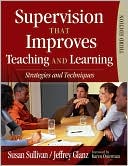Category Books
- Fiction Books & Literature
- Graphic Novels
- Horror
- Mystery & Crime
- Poetry
- Romance Books
- Science Fiction & Fantasy
- Thrillers
- Westerns
- Ages 0-2
- Ages 3-5
- Ages 6-8
- Ages 9-12
- Teens
- Children's Books
- African Americans
- Antiques & Collectibles
- Art, Architecture & Photography
- Bibles & Bible Studies
- Biography
- Business Books
- Christianity
- Computer Books & Technology Books
- Cookbooks, Food & Wine
- Crafts & Hobbies Books
- Education & Teaching
- Engineering
- Entertainment
- Foreign Languages
- Game Books
- Gay & Lesbian
- Health Books, Diet & Fitness Books
- History
- Home & Garden
- Humor Books
- Judaism & Judaica
- Law
- Medical Books
- New Age & Spirituality
- Nonfiction
- Parenting & Family
- Pets
- Philosophy
- Political Books & Current Events Books
- Psychology & Psychotherapy
- Reference
- Religion Books
- Science & Nature
- Self Improvement
- Sex & Relationships
- Social Sciences
- Sports & Adventure
- Study Guides & Test Prep
- Travel
- True Crime
- Weddings
- Women's Studies
Supervision That Improves Teaching and Learning: Strategies and Techniques » (3rd Edition)

Authors: Jeffrey Glanz, Susan Sullivan, Karen Osterman
ISBN-13: 9781412967136, ISBN-10: 1412967139
Format: Paperback
Publisher: Corwin Press
Date Published: June 2009
Edition: 3rd Edition
Author Biography: Jeffrey Glanz
Jeffrey Glanz currently holds the Raine and Stanley Silverstein Chair in Professional Ethics and Values in the Azrieli Graduate School of Jewish Education at Yeshiva University in New York City. Glanz was dean of Graduate Studies and chair of the Education Department at Wagner College in New York City. Prior to that he was executive assistant to the president at Kean University and was named Graduate Teacher of the Year in 1999 by the Student Graduate Association. He was also the recipient of the Presidential Award for Outstanding Scholarship in the same year. Glanz has authored, coauthored, edited, and coedited twenty volumes on various educational topics, including the 7-book What Every Principal Should Know about Leadership series with Corwin. He is a national speaker on topics including supervision, leadership, and self-improvement strategies for educators.
Susan Sullivan served as an instructor in the Department of Romance Languages of The Johns Hopkins University for 10 years and as a teacher and administrator in Baltimore, Maryland; Rome, Italy; and the New York City area. She is currently chair of the Department of Education of the College of Staten Island, The City University of New York. She was coordinator of the program in educational administration and continues to teach graduate courses in supervision of instruction and educational leadership. Her current research interests center on reflective practice, the role of the school district in systemic change, and of course, supervision of instruction and its alternatives. She has published in journals such as Journal of School Leadership, Journal of Curriculum and Supervision Development, Education and Urban Society, and Educational Leadership and Administration: Teaching and Program Development Journal. She received her BA from Elmira College, her MAT from The Johns Hopkins University, and her MEd and EdD from Teachers College, Columbia University.
Book Synopsis
Develop essential, hands-on supervisory skills that help teachers grow!
Effective supervision is an important way of improving staff performance and reducing the time spent on school problems. Based on empirical research, this updated third edition of a bestseller shows school leaders how to supervise teaching staff in a collegial, non-authoritarian way that enhances teaching and learning.
Reflecting today's emphasis on state and national standards and accountability, this user-friendly resource offers a reflective, school-tested supervision model and practical techniques that encourage supervisors and supervisees to maintain open dialogue about teaching and apply a collaborative approach to solving problems. Readers will find:
- Examples illustrating the supervision process
- Summary sheets and observation charts for use in the class room
- Reflective exercises designed to reinforce new material and concepts
- New sample scenarios focused on teaching and learning for diverse populations, including English language learners
- Updates addressing the expanding use of technology in schools
Supervision That Improves Teaching and Learning provides indispensable tools to help supervisors ensure true professional development by fostering skills improvement and empowering teachers as leaders in their classrooms.
Table of Contents
1. The Changing Context of Supervision What Is Supervision?
The Influence of History Supervision in the Late 19th Century Democratic Methods and Supervision Standards-Based Supervision Understanding the History of Supervision Implications for the Practice of Supervision Assessing Belief Systems Examples of Personal Vision Statements Conclusion Notes
2. Three Interpersonal Approaches to Supervision How We Learn Listening, Reflecting, and Clarifying Techniques Approaches to Providing Feedback Guidelines for Reflective Practice Summary Notes
3. Observation Tools and Techniques Supervision Scenario Thirty-Two Tools and Techniques for Observation Quantitative Observation Tools Qualitative Observation Tools Summary Conclusion Notes
4. An Introduction to Reflective Clinical Supervision A Definition of Clinical Supervision The Reflective Clinical Supervision Cycle Conclusion
5. Alternative Approaches: Case Studies and Implementation Guidelines Standards-Based Walk-Through Mentoring Peer Coaching A Journey: From Peer Coaching to Critical Friends Portfolios for Differentiated Supervision Peer Assessment: Selection, Support, and Evaluation Action Research Conclusion Notes
6. Supervision to Improve Classroom Instruction: Next Steps Next Steps Guidelines for Creating a Supervisory Platform
“For Me, Personally”: My Supervisory Platform Conclusion-or Just a Beginning?
Note Resource A. Microlab Guidelines Resource B. Fishbowl Guidelines Resource C. Technology in the Classroom: Tips That Span the Traditional to the Virtual Classroom Resource D. Observation Practice Sheets References Index
Subjects
 Academic Administration
Academic Administration  Educational Administration - General & Miscellaneous
Educational Administration - General & MiscellaneousEducation & Teaching
 Educational Theory, Research & History
Educational Theory, Research & History  Psychology of Education
Psychology of EducationEducation & Teaching
 Teaching & Teacher Training
Teaching & Teacher Training  Teaching - Classroom Planning & Management
Teaching - Classroom Planning & ManagementNonfiction
 All Nonfiction
All Nonfiction  Academic Administration
Academic Administration
